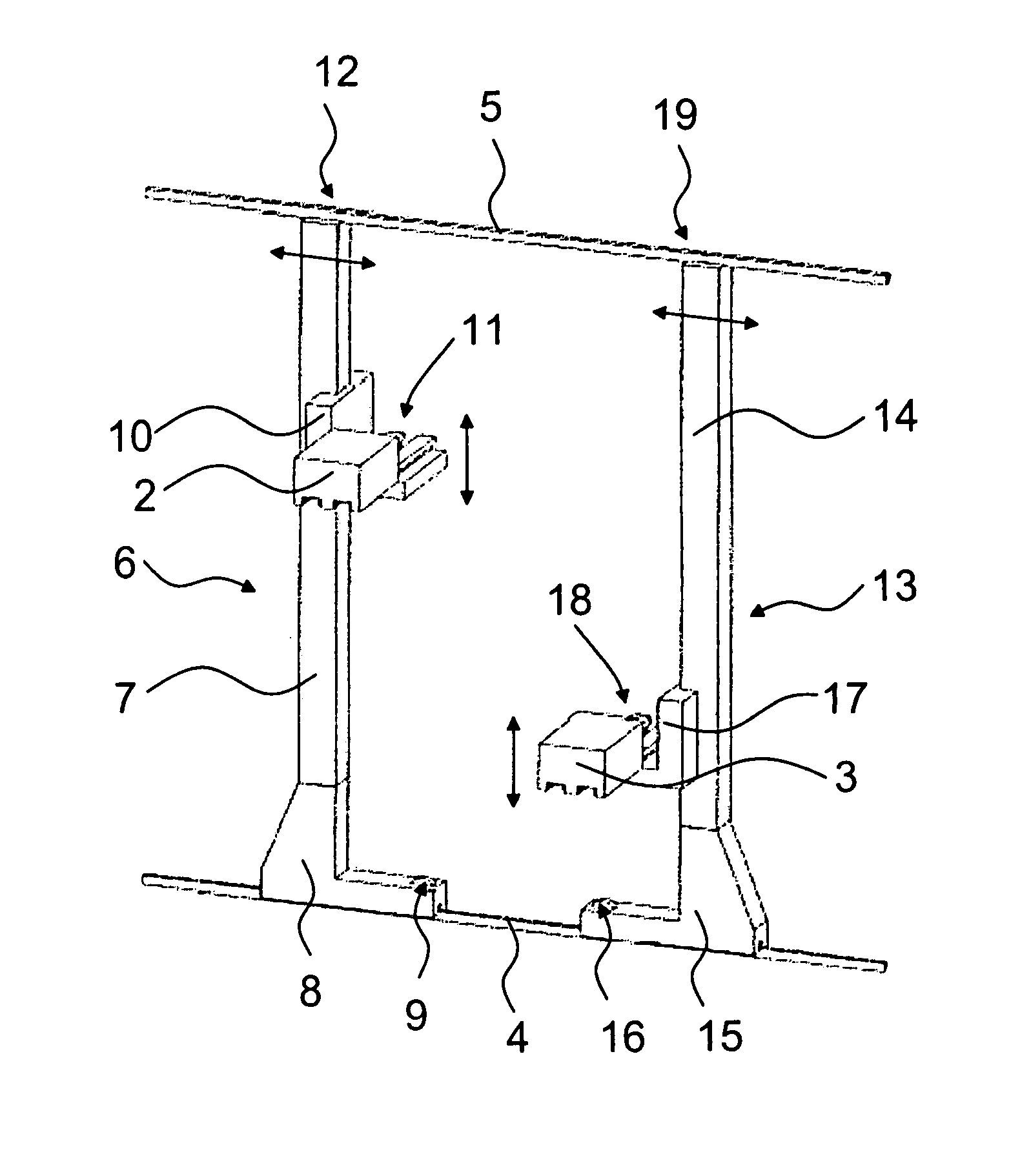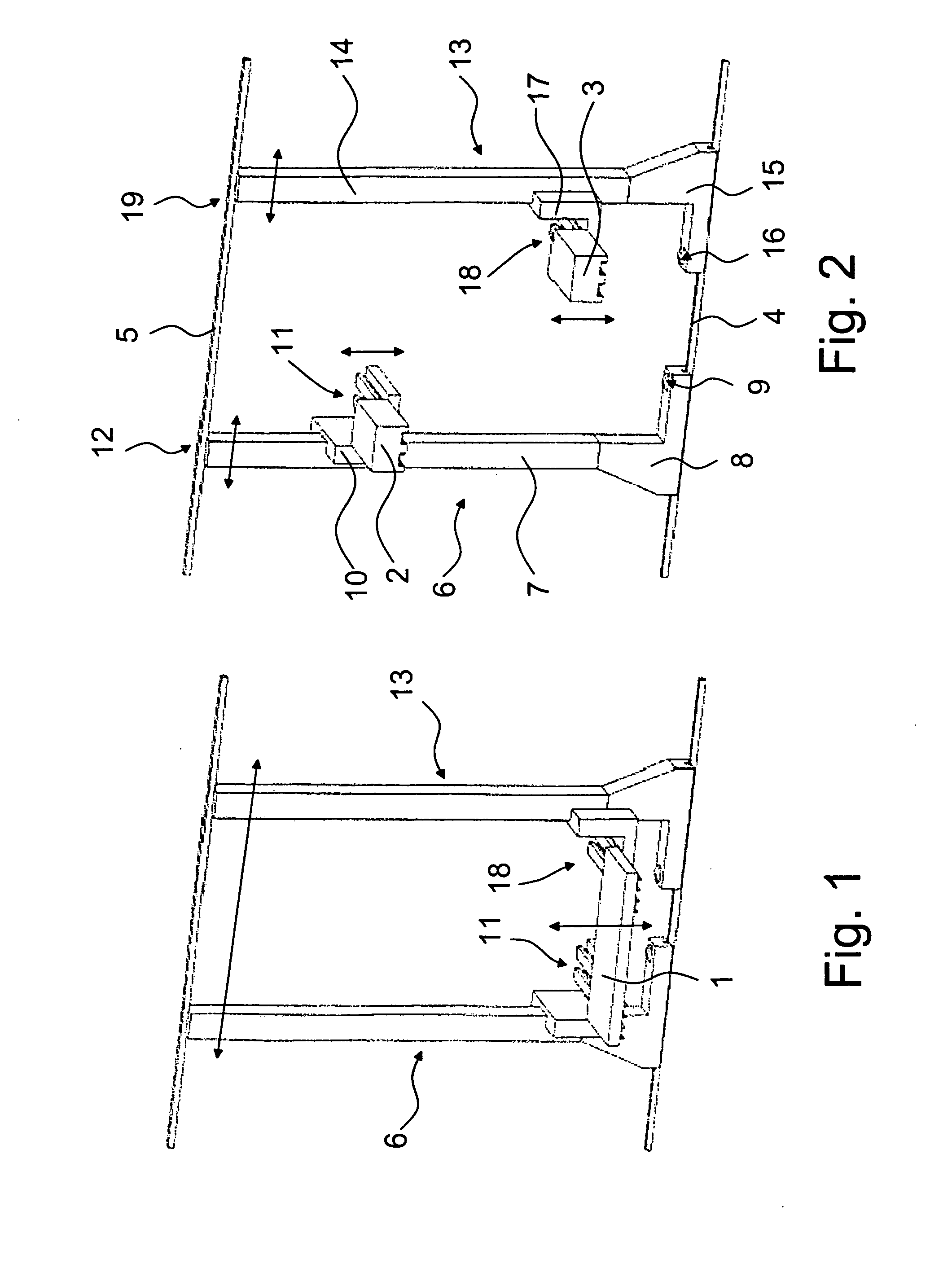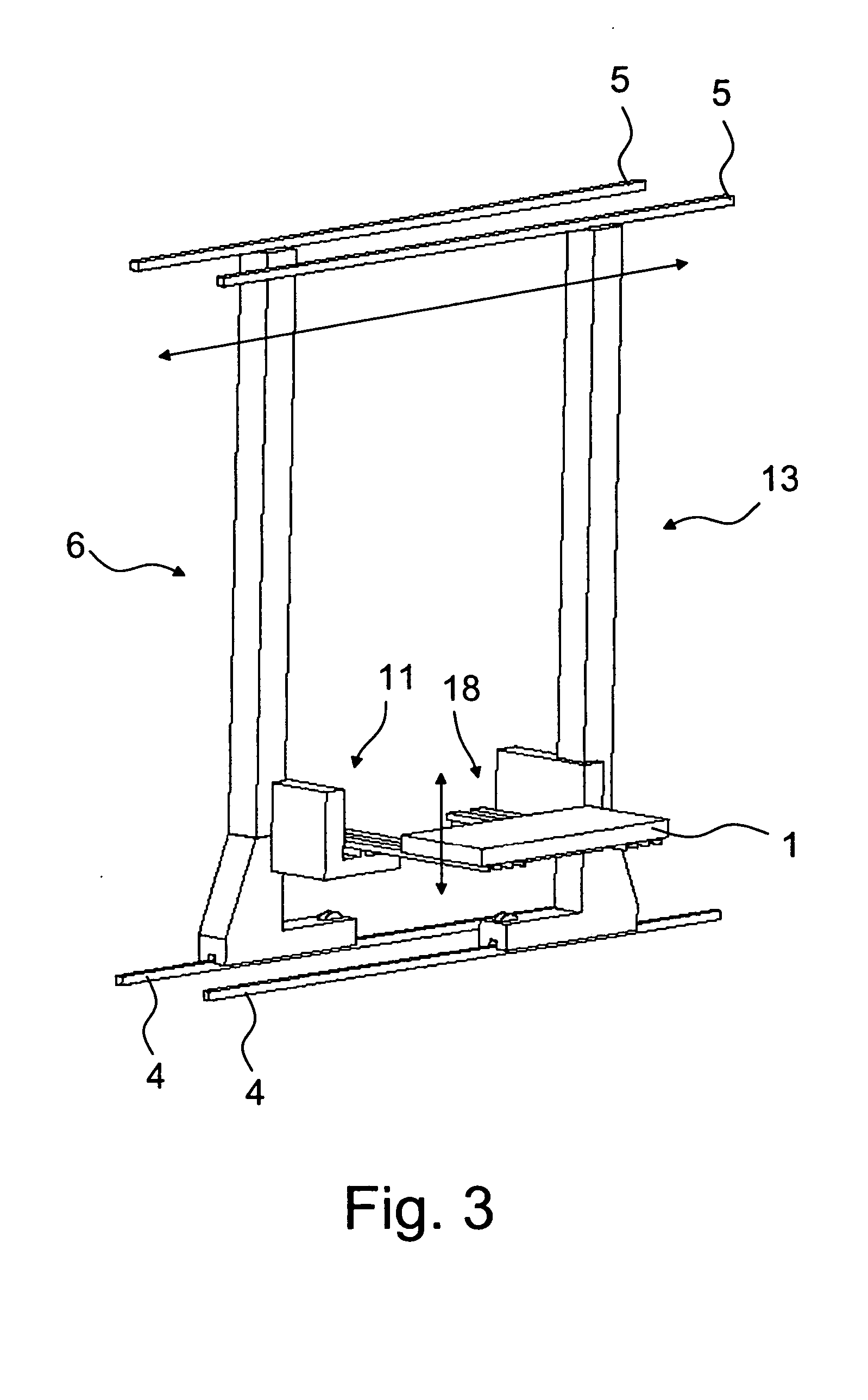System of several stacker cranes, and a method for controlling the same
a technology of stacker crane and system, which is applied in the direction of lifting devices, loading/unloading, storage devices, etc., can solve the problems of insufficient length distribution of pieces, inability to always know the length distribution of pieces in advance, and insufficient rack space, so as to increase the capacity of the rack system, the effect of increasing the capacity
- Summary
- Abstract
- Description
- Claims
- Application Information
AI Technical Summary
Benefits of technology
Problems solved by technology
Method used
Image
Examples
Embodiment Construction
[0021] The stacker cranes 6 and 13 shown in FIGS. 1 and 2 move in a way known as such, either at one set of racks or in an aisle formed between two sets of racks. The structure of the storage racks can be implemented and dimensioned in a variety of ways which are known as such from the design of warehouses for goods of both short and long dimensions. The stacker crane 6 or the stacker crane 13, or both of them, can also operate in different aisles in the way shown in FIG. 2, but one of them, or both of them, move into the same aisle or next to the same rack to operate in the way shown in FIG. 1. The aisles and the storage racks are parallel to a driving rail 4 and extend almost to the level of a guide rail 5, being distributed in several vertical rows and normally also several horizontal rows.
[0022] In this case, the stacker cranes of FIG. 2 are of the same type; the only difference may be whether the forks move in both directions or in a given direction. Stacker cranes of differen...
PUM
 Login to View More
Login to View More Abstract
Description
Claims
Application Information
 Login to View More
Login to View More - R&D
- Intellectual Property
- Life Sciences
- Materials
- Tech Scout
- Unparalleled Data Quality
- Higher Quality Content
- 60% Fewer Hallucinations
Browse by: Latest US Patents, China's latest patents, Technical Efficacy Thesaurus, Application Domain, Technology Topic, Popular Technical Reports.
© 2025 PatSnap. All rights reserved.Legal|Privacy policy|Modern Slavery Act Transparency Statement|Sitemap|About US| Contact US: help@patsnap.com



